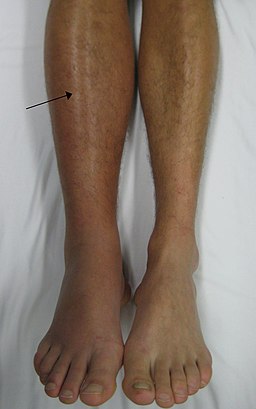“Economy Class Syndrome” is a myth, your risk of developing a blood clot during a long-distance economy trip by plane is not higher than in first class, researchers report in an article published in Chest. The American College of Chest Physicians (ACCP) has issued new evidence-based guidelines which address some of the risk factors linked to DVT (deep vein thrombosis) – it says that there is no compelling evidence linking economy class air travel to the development of DVT.
The risk factors that the experts addressed include sitting in a window seat, being old, pregnancy, and using oral contraceptives.
The new guidelines are called Antithrombotic Therapy and Prevention of Thrombosis, 9th ed: American College of Chest Physicians Evidence-Based Clinical Practice Guidelines”.
Guideline co-author Mark Crowther, MD, Department of Medicine, McMaster University, Hamilton, Ontario, Canada, said:
“Traveling in economy class does not increase your risk for developing a blood clot, even during long-distance travel; however, remaining immobile for long periods of time will. Long-distance travelers sitting in a window seat tend to have limited mobility, which increases their risk for DVT. This risk increases as other factors are present.” DVT is a serious condition that can lead to a potentially fatal blockage in the lung known as a pulmonary embolism (PE).
The swelling on the patient’s right leg is a sign of deep vein thrombosis (DVT)
The authors stress that the chances of developing DVT/PE (deep vein thrombosis, pulmonary embolism) during long-distance flights very small in the majority of cases. However, the following factors may contribute towards a higher risk if you are considering a long trip:
- Being immobile
- Being obese
- Being pregnant
- Having a history of DVT/PE, or a known thrombophilic disorder
- Having experienced a recent trauma
- Having some type of malignant cancer
- Having undergone a recent surgical intervention
- Sitting by the window
- Using oral contraceptives (estrogen use)
However, the risk is not greater in economy class than in business or first class, they add. The guidelines also say that there is no compelling evidence showing that alcohol intake or dehydration raises DVT/PE risk during a long-haul flight.
If you are already at high risk of DVT/PE, the following recommendations are made by ACCP if you are on a long-haul flight (over six hours long):
- do calf stretching exercises
- get up and walk around frequently
- if you can, sit on an aisle seat
- use compression stockings, the below-knee graduated compression ones
If you are not at higher-than-normal risk of DVT/PE, the guidelines say you should not wear compression stockings. The ACCP advises against taking aspirin or any anticoagulant as a preventive measure against DVT/PE for long-haul flights, unless your doctor has prescribed them for you.
Antithrombotic agents – their usage on long haul flights by people at high risk of DVT/PE should be considered on an individual basis. These types of medications have adverse effects, and the doctor needs to decide whether the benefits are greater than the risks.
Dr. Crowther said:
“Symptomatic DVT/PE is rare in passengers who have returned from long flights; however the association between air travel and DVT/PE is strongest for flights longer than 8 to 10 hours. Most passengers who do develop a DVT/PE after long-distance travel have one or more risk factors.”
The guidelines include over 600 recommendations regarding the treatment, diagnosis and prevention of thrombosis. It covers issues concerned with pregnancy, cardiovascular disease, stroke, atrial fibrillation, orthopedic surgery, surgery in general, neonates and children.
The authors stress that doctors need to carefully assess a patient for DVT/PE risk before prescribing or administering prevention therapies.
Guidelines Panel Chair Gordon Guyatt, MD, FCCP, said:
“There has been a significant push in health care to administer DVT prevention for every patient, regardless of risk. As a result, many patients are receiving unnecessary therapies that provide little benefit and could have adverse effects. The decision to administer DVT prevention therapy should be based on the patients’ risk and the benefits of prevention or treatment.”
ACCP Antithrombotic Guidelines, 9th edition
Written by Christian Nordqvist
